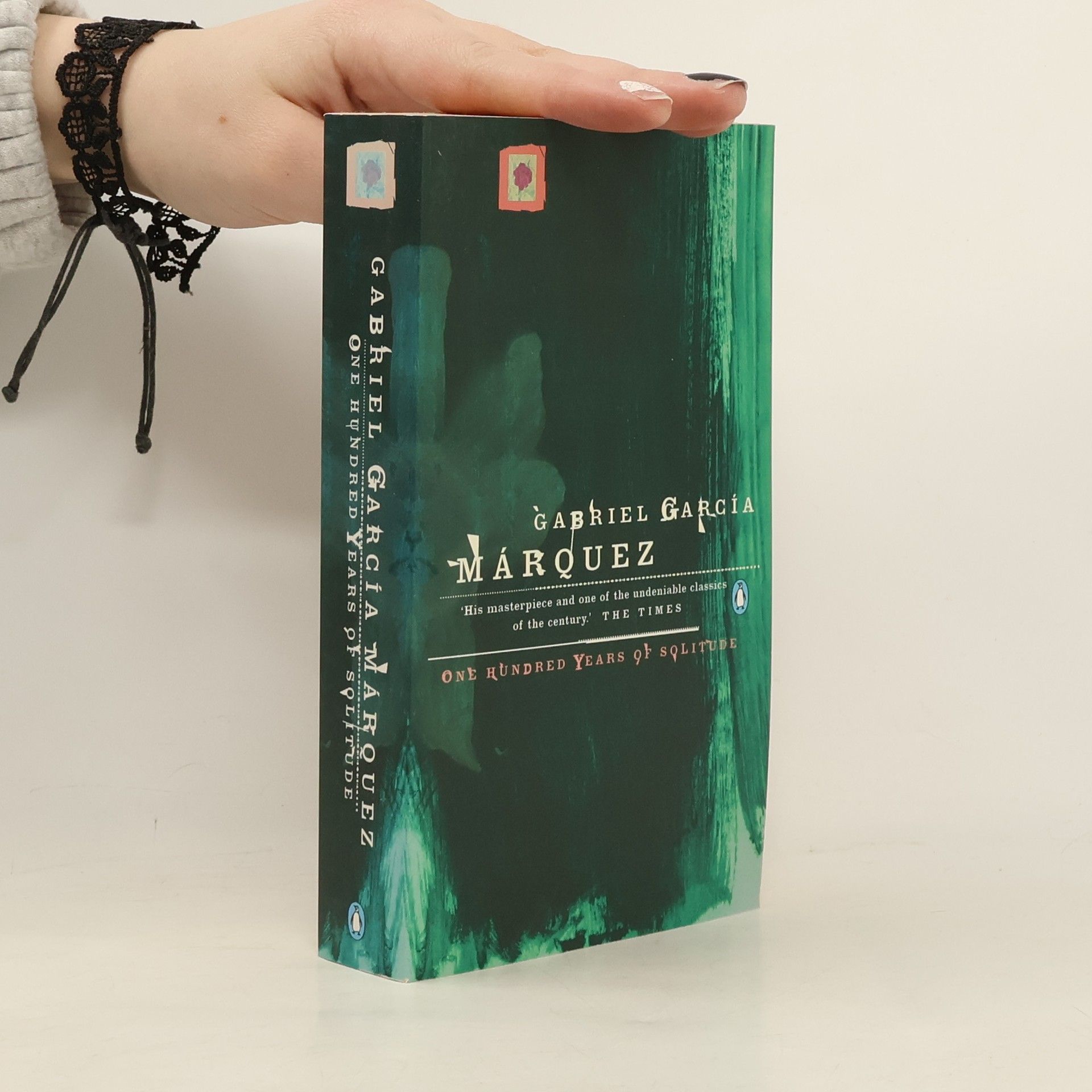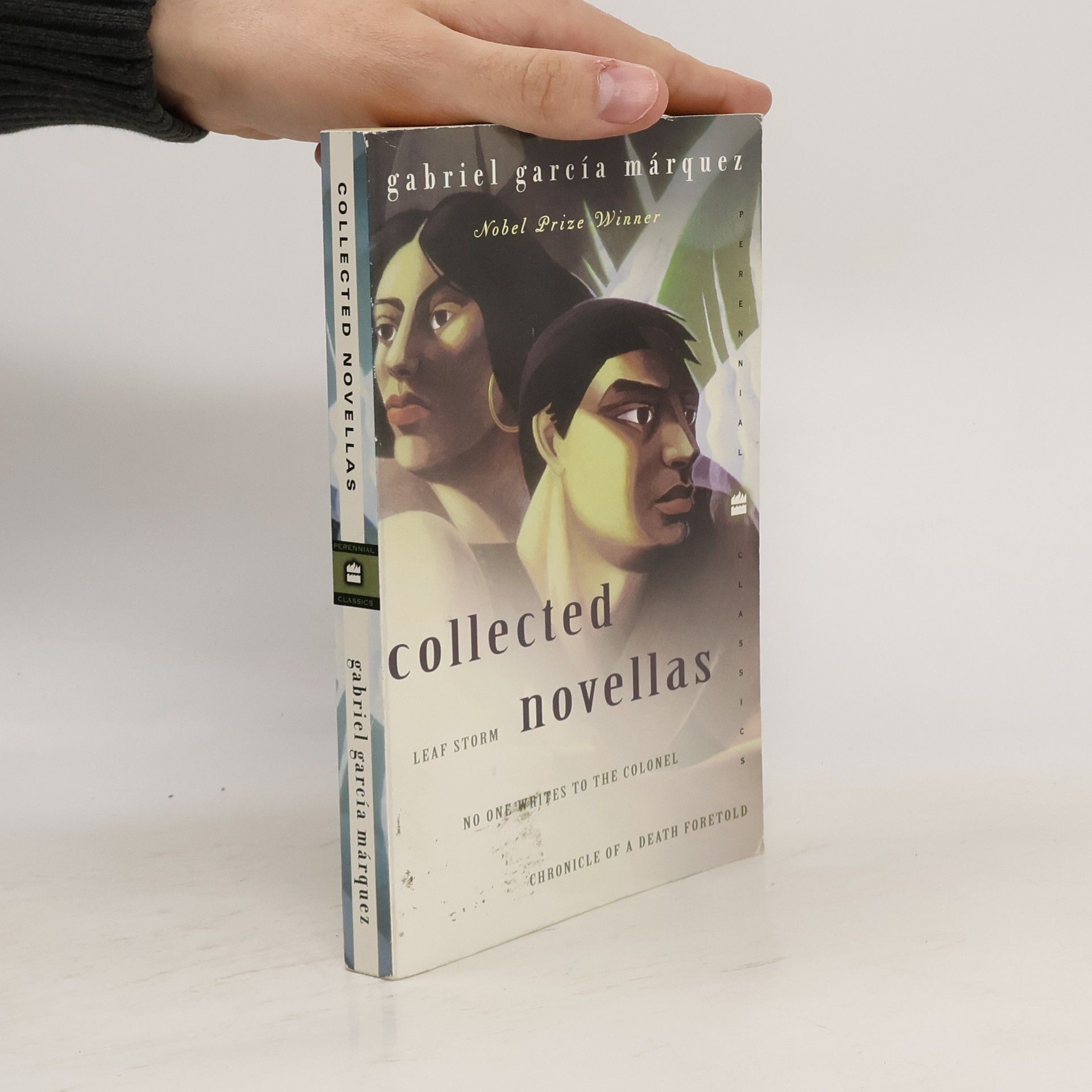A new collection of journalism from one of the great titans of 20th century literature "I don't want to be remembered for One Hundred Years of Solitude or for the Nobel Prize but rather for my journalism," Gabriel García Márquez said in the final years of his life. And while some of his journalistic writings have been made available over the years, this is the first volume to gather a representative selection from across the first four decades of his career--years during which he worked as a full-time, often muckraking, and controversial journalist, even as he penned the fiction that would bring him the Nobel Prize in 1982. Here are the first pieces he wrote while working for newspapers in the coastal Colombian cities of Cartagena and Barranquilla . . . his longer, more fictionlike reportage from Paris and Rome . . . his monthly columns for Spain's El País. And while all the work points in style, wit, depth, and passion to his fiction, these fifty pieces are, more than anything, a revelation of the writer working at the profession he believed to be "the best in the world." 'García Márquez always thought of himself as a journalist first and foremost and this brilliant collection goes a long way towards justifying that belief.' Salman Rushdie
Gabriel García Márquez Books
Gabriel José García Márquez, also known as Gabo in Spanish-speaking countries, was a Colombian writer, journalist and Nobel Prize winner for literature. García Márquez popularized Magic Realism, which integrates magical elements into realistic situations. Many of his works address individual isolation as well as the isolation of Latin America.







One Hundred Years of Solitude
- 422 pages
- 15 hours of reading
This magical realist novel tells the history of the Buendias family, the founders of Macondo, a remote South American settlement. In the world of the novel there is a Spanish galleon beached in the jungle, a flying carpet, and an iguana in a woman's womb. 'His masterpiece and one of the undeniable classics of the century.' The Times 'One of a glittering constellation of contemporary Latin American novelists ... He is the author of a classic on the grandest scale ... the most obvious comparison is with Homer's Odyssey ... Garcia Marquez is a spellbinder' Spectator
Collected Stories
- 292 pages
- 11 hours of reading
Collected here are twenty-six of Gabriel Garcia Marquez's most brilliant and enchanting short stories, presented in the chronological order of their publication in Spanish from three volumes: Eyes of a Blue Dog,Big Mama's Funeral, and The Incredible and Sad Tale of lnnocent Eréndira and Her Heartless Grandmother. Combining mysticism, history, and humor, the stories in this collection span more than two decades, illuminating the development of Marquez's prose and exhibiting the themes of family, poverty, and death that resound throughout his fiction.
Advanced Business Analytics
- 243 pages
- 9 hours of reading
The book describes advanced business analytics and shows how to apply them to many different professional areas of engineering and management. Each chapter of the book is contributed by a different author and covers a different area of business analytics. The book connects the analytic principles with business practice and provides an interface between the main disciplines of engineering/technology and the organizational, administrative and planning abilities of management. It also refers to other disciplines such as economy, finance, marketing, behavioral economics and risk analysis. This book is of special interest to engineers, economists and researchers who are developing new advances in engineering management but also to practitioners working on this subject.
Strange Pilgrims
- 208 pages
- 8 hours of reading
These twelve extraordinary stories by South America's preeminent man of letters, the Nobel Prize-winning author of the renowned classic One Hundred Years of Solitude and the international best-seller Love in the Time of Cholera, are set in contemporary Europe and recount the peculiar and amazing experiences that befall Latin Americans visiting or living abroad. An ailing Caribbean ex-President is befriended in Geneva by an ambitious ambulance driver and his headstrong wife. Margarito Duarte comes to Rome from the Colombian Andes with a box the shape and size of a cello case in order to show the Pope its contents. A woman who wears a snake ring with emerald eyes and is known only as Frau Frieda to the Latin American students in Vienna makes a living by telling her dreams to wealthy families. A pretty Mexican music hall performer is returning to Barcelona when her car breaks down, and she ends up in an insane asylum. In Tuscany, a vacationing family visits a Renaissance castle now owned by a famous Venezuelan writer and meets up with a phantom. Maria dos Prazeres, once Barcelona's most sought-after lady of the night, has a dream in which death appears, so she begins to plan her own funeral. A widow dressed in the habit of Saint Francis sails to Rome from Argentina to meet the Pope. A beautiful Caribbean boy is driven mad in Spain. A German governess destroys the summer for her wards - and is herself destroyed. Billy Sanchez takes his pregnant wife with a cut on her ring finger to a hospital in Paris - and never sees her again. Once again in this breathtaking collection, Gabriel Garcia Marquez invites us into worlds of majesty and magic, from which we emerge spellbound.
Gabriel Garcia Marquez: The Last Interview
- 108 pages
- 4 hours of reading
"A conjurer of literary magic" --The New York Times Nobel Prize-winning author Gabriel García Márquez was one of the most widely translated and beloved writers of his time, and yet, as this revelatory book shows, there were many sides of him that English-language readers do not know. This volume includes the first-ever English translation of García Márquez's final conversation with Spanish journalist Xavi Ayén, along with other rare and never-before-translated interviews from throughout his long career. García Márquez discusses his extraordinarily varied literary work and his often controversial politics, and what emerges is a richer, deeper, more intimate portrait of this great writer than we've encountered before.
Translating the speeches of prize-winning author Gabriel Garcia Marquez into English, this edition includes his writings that span Marquez's entire life: from his earliest days, speaking as a teenager graduating high school, to his acceptance speech for the Nobel Prize. It offers insight into Marquez's long career.
This book presents three essays on Cuba by Nobel prize winning author Gabriel García Márquez.
"García Márquez has extraordinary strength and firmness of imagination and writes with the calmness of a man who knows exactly what wonders he can perform."--Alfred Kazin, New York Times Book ReviewRenowned as a master of magical realism, Gabriel García Márquez has long delighted readers around the world with his exquisitely crafted prose. Brimming with unforgettable characters and set in exotic locales, his fiction transports readers to a world that is at once fanciful, haunting, and real. Leaf Storm, Gabriel García Márquez's first novella, introduces the mythical village of Macondo, a desolate town beset by torrents of rain, where a man must fulfill a promise made years earlier. No One Writes to the Colonel is a novella of life in a decaying tropical town in Colombia with an unforgettable central character. Chronicle of a Death Foretold is a dark and profound story of three people joined together in a fatal act of violence.Gabriel García Márquez was born in Colombia in 1927. His many books include the novels One Hundred Years of Solitude and Love in the Time of Cholera. He was awarded the Nobel Prize for Literature in 1982.
Living to Tell the Tale
- 496 pages
- 18 hours of reading
In this long-awaited first volume of a planned trilogy, the most acclaimed and revered living Nobel laureate begins to tell us the story of his life. Like all his work, Living to Tell the Tale is a magnificent piece of writing. It spans Gabriel García Márquez’s life from his birth in 1927 through the start of his career as a writer to the moment in the 1950s when he proposed to the woman who would become his wife. It has the shape, the quality, and the vividness of a conversation with the reader—a tale of people, places, and events as they occur to him: the colorful stories of his eccentric family members; the great influence of his mother and maternal grandfather; his consuming career in journalism, and the friends and mentors who encouraged him; the myths and mysteries of his beloved Colombia; personal details, undisclosed until now, that would appear later, transmuted and transposed, in his fiction; and, above all, his fervent desire to become a writer. And, as in his fiction, the narrator here is an inspired observer of the physical world, able to make clear the emotions and passions that lie at the heart of a life—in this instance, his own. Living to Tell the Tale is a radiant, powerful, and beguiling memoir that gives us the formation of Gabriel García Márquez as a writer and as a man.


